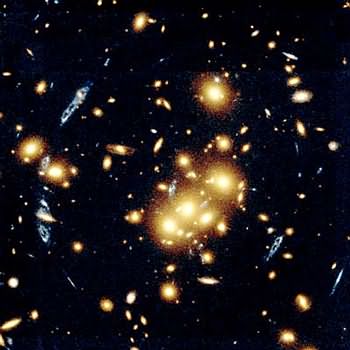Fred the Cat wrote:Ann wrote:Donald Pelletier wrote:From the top of the image along the diagonal, the galaxies of this image are : IC 5168, NGC 7214, HCG 91d, ESO 467-13 and ESO 467-15. Thank to Aladin, but i would like to know which are HCG 91a, HCG 91b and HCG 91c. Also, how many galaxies compose that group, 4 or more?
The large central galaxy with the huge tidal streams is HICK 91A. also known as NGC 7214. The small yellow galaxy immediately below it is HICK 91D, also known as PGC 68155. The arm-rich blue galaxy which looks like a lovely flower is HICK 91C, also known as PGC 68160. At least this is what my software says!
I can't find HICK 91B, unfortunately. Unless, of course, HICK 91D really is HICK 91B!
Ann
Ann – Your lovely flower (PGC 68160) also caught my eye. In looking for a better image you run across newly published works such as"
STAR FORMATION SUPPRESSION IN COMPACT GROUP GALAXIES: A NEW PATH TO QUENCHING?" and one is awestruck by the detail and complexity in a modern Astrophysical Journal article.
The specific use of color within the text of the article alone represents a new era in which the authors present their data in new and thought-provoking ways – and it's pretty too.

The steps to publish such a thing must be mind-bending.

Thanks for the link to that fascinating article, Fred!
The focus of that article is the quenching of star formation in compact groups of galaxies. That's why I found it so interesting that the galaxy group of today's APOD is so totally dominated by spirals, the largest and most prominent of them relatively robustly starforming.
Which of the galaxies in the picture belong to Hickson 91? Well, the four galaxies labeled HCG 91 A, B, C and D belong to the group. (Geck was absolutely correct in her identification of HCG 91B.) I believe that the small rather neutral-colored seemingly barred galaxy located some distance to the left of one long curving tidal tail emanating from NGC 7214 may also be part of the group.
But the moderately large edge-on galaxy at 10 o'clock, IC 5168, is not part of the group. It is too fluffy, and its central region is too faint. Compare NGC 5168 with the fluffy blue foreground galaxy NGC 7320, seen in front of the compact group
Stephan's Quintet.
In the upper left part of the picture you can find several small bright yellow-orange ellipticals, and at least one yellow-orange barred disk galaxy with distorted tidal tails. These galaxies are not part of Hickson 91, because they are clearly too far away.
There is also one small almost anomalously blue edge-on galaxy at 9 o'clock. It looks so different than the Hickson 91 galaxies that I doubt it is a member, but because it is less well resolved than the fluffy foreground galaxy to its upper right, it just might be at the same distance as the galaxies of Hickson 91. If it is, it would not be much farther away from the dominant galaxy NGC 7214 than the galaxy to the lower right, PGC 68164, and that would make it a member of the group.
Ann
 Hickson 91 in Piscis Austrinus
Hickson 91 in Piscis Austrinus

